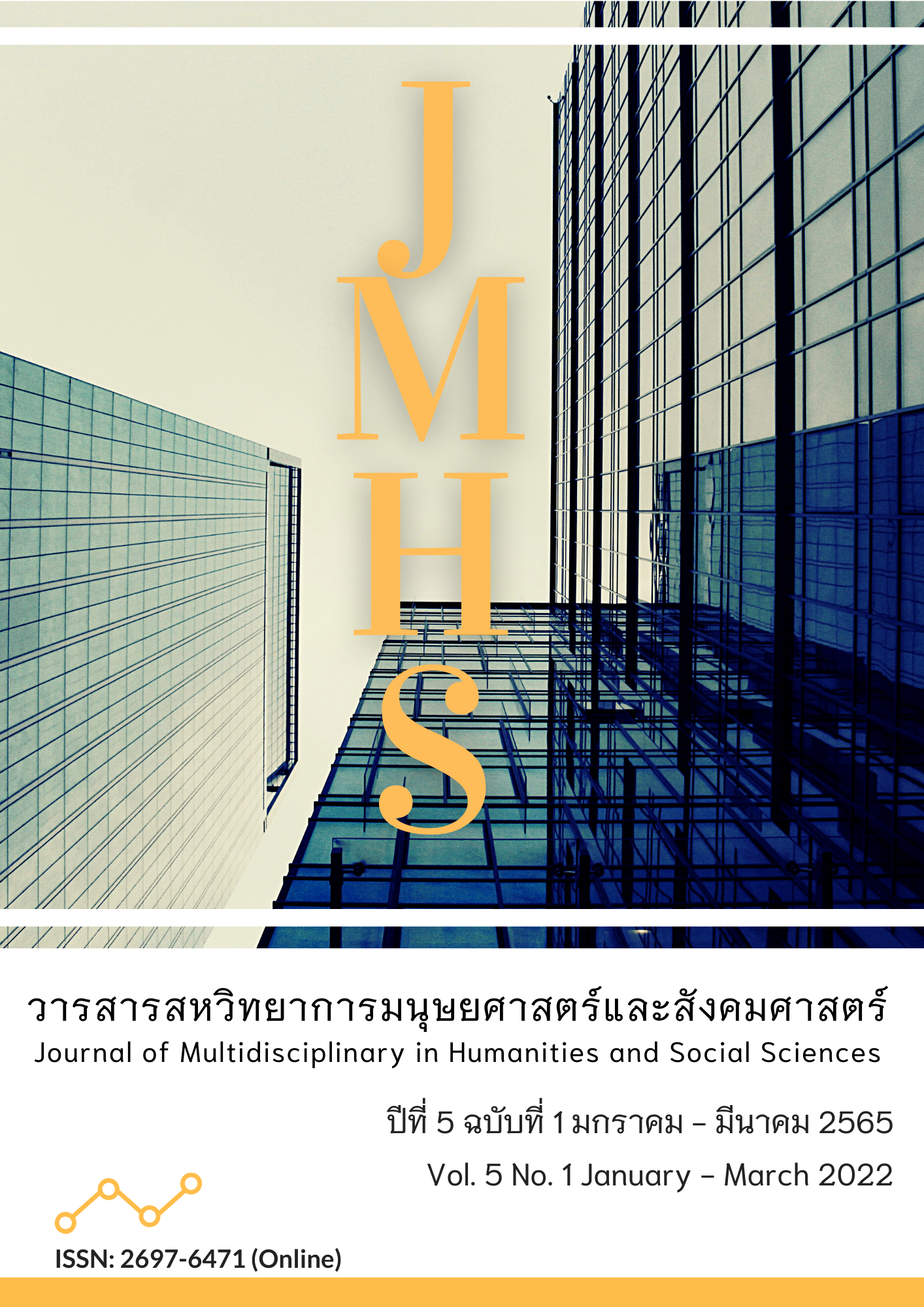Comparative Study of Inbound Logistics Technology of Goat Farming: Pathum Thani Province and Samut Sakhon Province
Main Article Content
Abstract
The purposes of this research were to study the farmer’s status, the economy, media perception, and the factors affecting adaptation to goat farming technology, problems, and suggestions from the farmers. This research employed mixed methods using both qualitative and quantitative techniques, which included in-depth interviews and questionnaire surveys. The sampling was 35 in each province. Data were collected and analyzed using basic statistics and multiple regression computer programs.
It was found that: 1) both farmers’ status and media perception are equal, but Pathum Thani province has more goat farming knowledge than Samut Sakhon province; 2) factors affecting inbound logistics technology acceptance, which has a statistically significant relationship at 0.05 were goat house, breed herd rates, roughage, vaccination, deworming, and Brucellosis testing was high; and 3) problems encountered with the invading the area to be urbanization in Pathum Thani province. Some goat framings evacuate to other provinces compared with Samut Sakhon province, where the trend of goat raising is to gain more market due to the abundance of food sources, adequate land for grazing or foraging, but only have a closed-blood inbreeding problem. The tendency of sanitation and disease prevention in Pathum Thani province is appropriate with some veterinarians' or livestock officers’ recommendations from time to time, whereas Samut Sakhon province is starting the raise seriously in 2014 as a goat community enterprise.
Article Details

This work is licensed under a Creative Commons Attribution-NonCommercial-NoDerivatives 4.0 International License.
Views and opinions appearing in the Journal it is the responsibility of the author of the article, and does not constitute the view and responsibility of the editorial team.
References
กรมปศุสัตว์. (2559). ข้อมูลเศรษฐกิจการปศุสัตว์ ประจำปี 2559. กรุงเทพฯ: กรมปศุสัตว์.
กรมปศุสัตว์. (2562). ข้อมูลเกษตรกรผู้เลี้ยงสัตว์ระดับจังหวัด ปี 2562. กรุงเทพฯ: กระทรวงเกษตรกรและสหกรณ์.
จุรีพร กาญจนการุณ. (2551). วิถีชีวิตชุมชนที่เปลี่ยนไปของเกษตรกรชาวสวนส้มบางมด. วารสารพัฒนศาสตร์, 5(1), 45-56.
นงลักษณ์ วิรัชชัย. (2543). พรมแดนความรู้ด้านการวิจัยและสถิติ. บรรณาธิการโดย เนาวรัตน์ พลายน้อย, ชัยยันต์ ประดิษฐศิลป์ และ จุฑามาศ ไชยรบ. ชลบุรี: วิทยาลัยการบริหารรัฐกิจ, มหาวิทยาลัยบูรพา.
นิพนธ์ พัวพงศกร และคณะ. (2560). โครงการภาพอนาคตในปี 2035: ที่ดิน พลังงาน และน้ำในประเทศไทย(รายงานฉบับสมบูรณ์). สำนักงานคณะกรรมการส่งเสริมวิทยาศาสตร์ วิจัยและนวัตกรรม.
ปริญญา เฉิดโฉม, กนกพร ภาคีฉาย, อุไรวรรณ อินทศร และ ปราโมทย์ เพชรศรี . (2553). รายงานวิจัยฉบับสมบูรณ์ โครงการ “ความต้องการบริโภคเนื้อแพะและแกะใน 5 จังหวัดชายแดนใต้ (ปัตตานี ยะลา นราธิวาส สตูล และสงขลา)”. สืบค้นจาก file:///C:/Users/HP/Downloads/362021.pdf
ภรภัทร ไชยสมบัติ และ นราวุธ ระพันธ์คำ. (2562). ปัจจัยที่มีผลต่อต้นทุนการผลิตน้ำนมดิบของเกษตรกรในจังหวัดสกลนคร. วารสารเกษตรพระวรุณ, 6(1), 142–153.
วินัย ประลมพ์กาญจน์. (2542). การผลิตแพะเนื้อและแพะนมในเขตร้อน. นครศรีธรรมราช: สำนักวิชาเทคโนโลยีการเกษตร มหาวิทยาลัยวลัยลักษณ์.
Dale, E. (1967). Can you give the public what it wants? New York: World Book Encyclopedia and Cowles Education Corporation.
Davis, F. (1989) Perceived Usefulness, Perceived Ease of Use, and User Acceptance of Information Technology. MIS Quarterly, 13, 319-340. https://doi.org/10.2307/249008
Good, C. V. (1973). Dictionary of Education. New York: McGraw-Hill Book.


